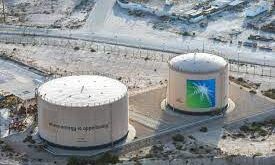The diversification of energy sources that feed the American electric grid should be a national security priority to ensure a robust national grid system that can withstand natural disasters and terrorist attacks on U.S. infrastructure. But. according to a new paper by the Michigan Technological University (MTU). that’s not enough.
The experts said that building resilience to cascading blackouts. attacks from hostile foreign entities. and other grid-threatening events requires the wide-scale development of solar resources while creating independently functioning micro-grids that will retain their ability to produce power in case of a mass outage. And the American military concurs:
The U.S. military is extremely dependent on electricity now. it`s not people fighting with bayonets. says co-author Joshua Pearce. professor of electrical and computer engineering. If we put the money into PV-powered microgrids. it would be making us objectively more secure and we get a return on our investment as after the initial investment in [photovoltaic electricity] the military would enjoy free solar electricity for the next 25 years.
A quick skim of policy papers from a range of think tanks shows that concern regarding the security of the electric grid plagues lawmakers on both sides of the isle. The Heritage Foundation identified the system’s weakest point—transmission systems—in a 2014 report. The year before. a sniper attacked a power substation adjacent to San Jose. California. causing the site to be out of commission for roughly one month.
Natural disasters alone cost consumers $18-$33 billion in power outages and infrastructure carnage. and those tend to be limited in size and scope depending on the size of the tornado. hurricane. or earthquake. Larger attacks stemming from malice against American culture or foreign policy could cause worse damage.
An important component of cybersecurity in large electronic systems requires decentralization. Experts consider the American elections to be extremely resilient against hackers aiming to change votes in favor of their preferred candidates because of the sheer number of entities that would have to be attacked to produce results. Voting machines in the U.S. are not connected to the internet. and votes themselves are not recorded in a grand national repository where they could be manipulated in one fell swoop.
Instead. individual voting centers report to counties. which reports to state authorities. determine the winner of the state for the presidential race. State and local elections use a similar procedure to count poll outcomes. Decentralization is key.
This small company could be one of the biggest winners of the coming gold boom. Backed by a billionaire resource investor and management dream team they could be the next big thing in the space.
The American grid also operates via three separate interconnections. Any one portion of the grid can temporarily support another in case of a modest blackout. but the three-legged system has many struggles. New mini-grids. propped up by locally installed solar panels. have begun popping up in New York City and other liberal hotspots. In the event of a widespread outage. these oases will be able to continue power generation.
The MTU paper designed a technical and economic feasibility plan to power the entirety of the United States with solar power on a hybrid micro-grid with the capability to store power to ensure against larger outages. The researchers said they would hire the same companies that provide a similar service for American military bases—Lockheed Martin. Bechtel. and General Electric.
“Given the results. the challenge to meet grid resiliency with microgrid deployment is feasible because the resources to install these systems already exist domestically.” the report reads. A note by Dr. Chelsea Schelly. an associate professor of Sociology at MTU. added that the military’s renewable energy policy could be used as a guide for state or national policies of the same kind.
If we recognize that this capacity already exists. then we can start thinking about PV as a security measure by integrating micro-grids – and then creating local resilience based on military technologies.” the professor said.
This process would protect against cyberattacks such as the those levied against Ukraine in December 2016. Russian attackers were suspected to be the perpetrators. but that’s just a suspicion. The identity of the aggressors. who took down a fifth of Kiev’s energy consumption. is. frankly. irrelevant. Will it really matter WHO attacked the U.S. when a third of the country is suddenly in the dark. largely unable to work or live? Proactivity in decentralizing the grid. as several European countries have already done. would put the U.S. in a non-negotiable position of strength.

 Iran Energy News Oil, Gas, Petrochemical and Energy Field Specialized Channel
Iran Energy News Oil, Gas, Petrochemical and Energy Field Specialized Channel



